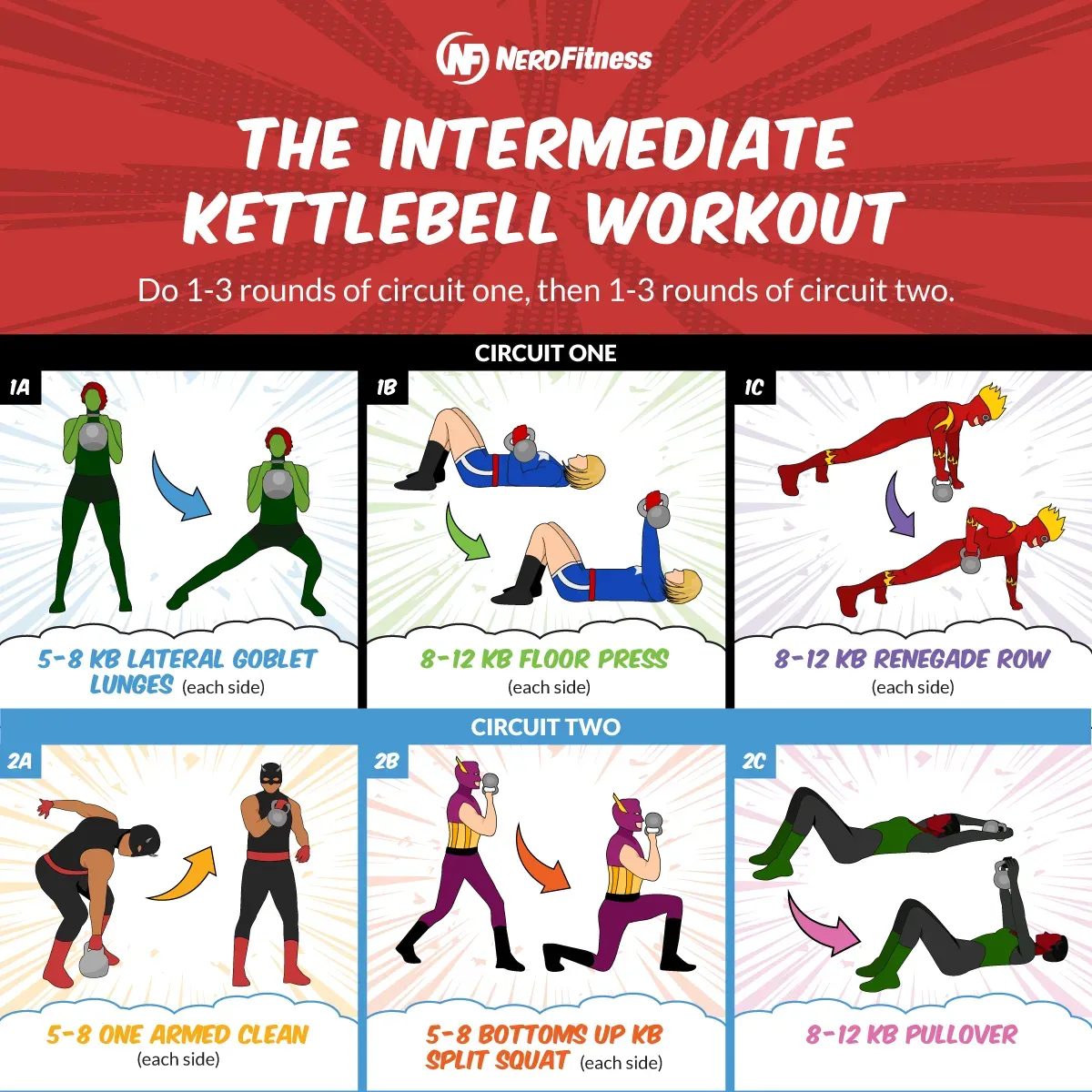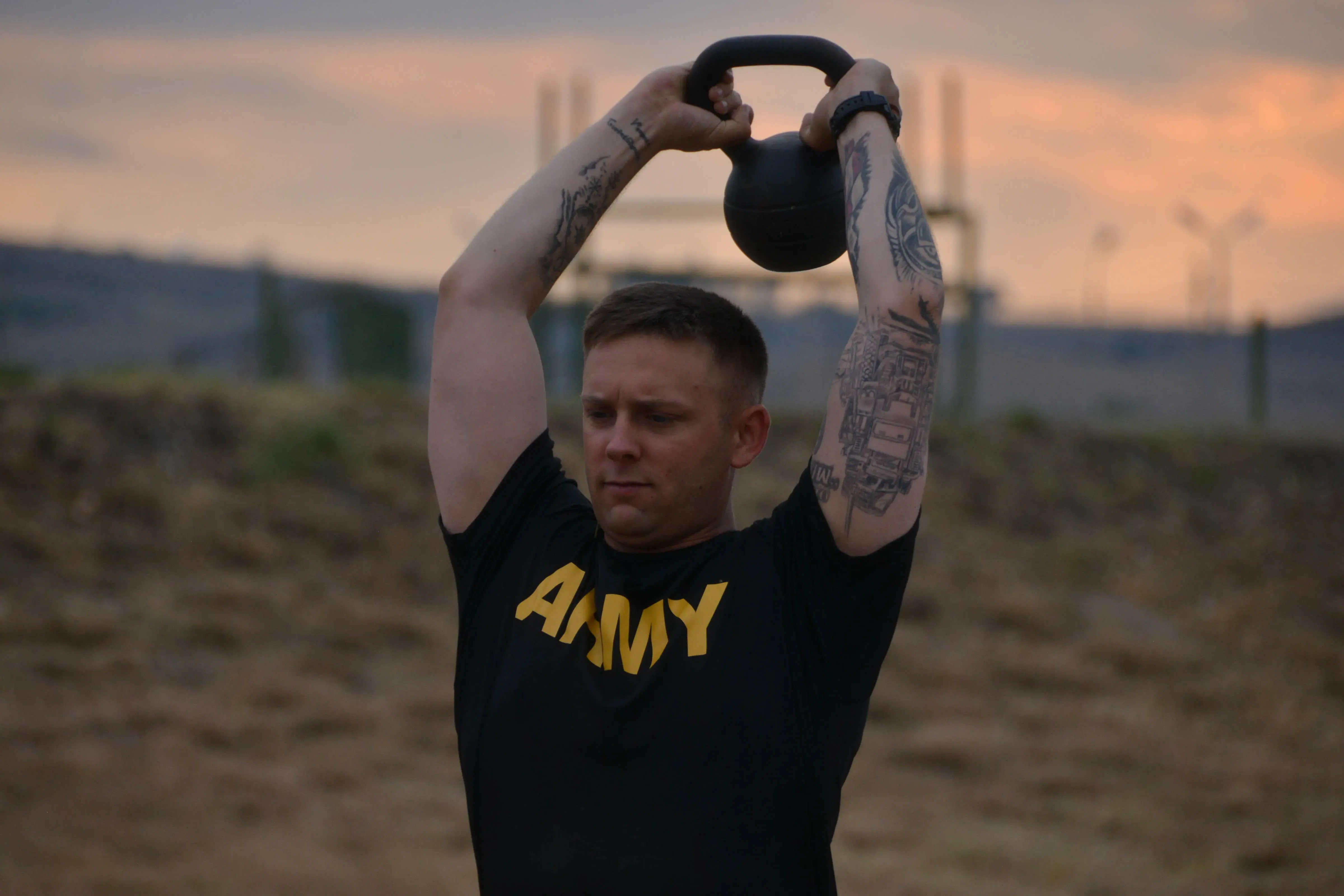Table of Contents
Alright, let's talk kettlebells. Maybe you've seen someone swinging one around at the gym, looking like they know exactly what they're doing, and thought, "Is that even for me?" Or perhaps you bought one on a whim and it's now collecting dust in a corner, a silent judgment on your fitness aspirations. It's true, a kettlebell looks like a cannonball with a handle, and the idea of swinging heavy metal near your knees can seem... ambitious, at best. But here’s the deal: starting kettlebell training doesn't require you to be some kind of circus strongman or a Crossfit elite. It requires understanding the basics, respecting the weight, and learning a few key moves. This isn't about performing death-defying feats on day one. It's about building a solid foundation. We're going to cut through the noise, figure out what weight makes sense for you to start with, nail the essential movements, and make sure you don't end up needing a chiropractor after your first session. Consider this your practical guide to actually starting kettlebell training without the usual fluff and nonsense. Ready to stop staring at that thing and actually use it?
Why You Should Consider Starting Kettlebell Training

Why You Should Consider Starting Kettlebell Training
So, you're wondering if swinging a kettlebell is really worth the effort? Let's cut to the chase. Why you should consider starting kettlebell training boils down to efficiency and real-world strength. Unlike machines that isolate muscles in a sterile environment, kettlebells demand your body work as a unit. Think about picking up a heavy grocery bag or lifting your kid – those aren't isolated bicep curls. Kettlebells mimic these functional movements, building strength that actually translates to daily life. They torch calories because you're using multiple muscle groups simultaneously, improving cardiovascular fitness while building power. Plus, you don't need a gym full of equipment; one or two kettlebells can provide a killer full-body workout in a small space. It's a no-nonsense tool for building resilience, power, and a physique that looks and feels capable.
Choosing Your First Kettlebell Weight for Starting Kettlebell Training

Choosing Your First Kettlebell Weight for Starting Kettlebell Training
Getting a Handle on Starting Weights for the Swing
Alright, let's tackle the big question right away: what weight do you actually need when starting kettlebell training? Forget the idea that you need to go heavy right out of the gate. The kettlebell swing is usually the first movement people learn, and it's a powerful, dynamic exercise. For most adult men who are reasonably active, a good starting point for the swing is often a 16kg (around 35 lbs) kettlebell. It's heavy enough to teach you the hip hinge and generate power, but not so heavy that it immediately breaks your form or feels impossible. For women, a 12kg (around 26 lbs) is a frequently recommended starting weight. Some might even start with an 8kg (around 18 lbs) if they have less strength training experience or are unsure. The goal isn't to lift the most weight, it's to learn the movement pattern correctly.
Why Starting Too Heavy is Just Plain Dumb
Look, nobody is impressed if you grab a monster kettlebell on day one and swing it with terrible form, using your back instead of your hips. That's a fast track to pain, not progress. When you're starting kettlebell training, the weight is secondary to technique. A weight that's too heavy will force you to compensate, building bad habits that are hard to unlearn and significantly increasing your risk of injury, especially in your back and shoulders. You need to feel comfortable enough with the weight to focus on the mechanics: the hip drive, the relaxed arms, the powerful snap at the top. Think of your first kettlebell as a tool for learning the language of kettlebell movements, not just a brute force object. Err on the side of lighter if you're truly unsure. You can always move up later.
Here's a quick guide for common starting weights, remember these are just suggestions:
- Most Men (active): 16kg (35 lbs)
- Most Women (active): 12kg (26 lbs)
- Beginner Men (less experience): 12kg (26 lbs)
- Beginner Women (less experience): 8kg (18 lbs)
- Stronger/Athletic Men: Might start at 20kg (44 lbs)
- Stronger/Athletic Women: Might start at 16kg (35 lbs)
Mastering the Basics: Essential Exercises When Starting Kettlebell Training

Mastering the Basics: Essential Exercises When Starting Kettlebell Training
you've got your kettlebell – good job not letting it become a very expensive doorstop. Now comes the fun part: actually moving with it. When you're starting kettlebell training, don't try to do everything at once. There are a few foundational movements that are absolutely critical to learn first. These aren't just random exercises; they build the core strength, stability, and movement patterns you'll need for everything else down the road. Get these wrong, and you're building your house on shaky ground. Get them right, and you unlock a whole new level of fitness. Mastering these basics when starting kettlebell training is non-negotiable.
So, what are these must-learn moves?
- The Kettlebell Swing: This is the king. It's a hip-hinge movement, not a squat or an arm lift. Focus on power from the hips, not lifting with your shoulders.
- The Goblet Squat: Holds the bell at your chest. Great for learning to squat deep with an upright torso and building lower body strength.
- The Turkish Get-Up (TGU): Sounds complex, and it is, but learning it slowly builds incredible core stability and shoulder health. Think of it as a controlled, deliberate movement from lying down to standing up with the bell held overhead.
- The Kettlebell Deadlift: A simple, powerful hip hinge that teaches you to lift heavy objects safely off the floor.
Stay Safe: Key Tips for Starting Kettlebell Training Without Injury

Stay Safe: Key Tips for Starting Kettlebell Training Without Injury
Form Over Everything Else
Let's be brutally honest: a kettlebell doesn't care about your ego. It's a piece of iron, and if you treat it with disrespect, it will make you pay. The absolute cornerstone of starting kettlebell training safely is prioritizing form above all else. This isn't just some annoying advice trainers parrot; it's the difference between building strength and scheduling a visit to the physical therapist. Don't add weight or rush reps if your technique isn't solid. Video yourself if you can. Watch tutorials from reputable coaches. Get feedback. Your body will thank you, and you'll actually get stronger faster by doing things right from the start. Think of learning the movements like learning to drive – you wouldn't just floor the accelerator on day one.
Listen to Your Body and Warm Up
This might sound obvious, but it's amazing how many people ignore the warning signs. When starting kettlebell training, pay attention to aches that feel wrong versus normal muscle fatigue. Sharp pain is a stop sign, not a suggestion to push harder. Your body is giving you feedback; ignoring it is just asking for trouble. Equally important is preparing your body for the work ahead. A proper warm-up isn't just jogging in place for 30 seconds. It involves dynamic movements that get your joints ready and your muscles activated for kettlebell-specific patterns like the hinge and squat. Skipping the warm-up is like trying to start a cold engine and immediately redlining it. Don't do it. Cool down and stretch too; it helps with recovery and mobility.
- Always warm up for 5-10 minutes before lifting.
- Focus on dynamic stretches related to the movements (hip circles, arm swings, torso twists).
- Stop immediately if you feel sharp or unusual pain.
- Don't try to "work through" bad pain; that's a recipe for injury.
- Listen to fatigue levels; sometimes rest is the best workout.
Don't Be Afraid to Ask for Help or Use Resources
Nobody is born knowing how to swing a kettlebell correctly. There's a learning curve. If you're unsure about your form when starting kettlebell training, find a certified kettlebell instructor, even if it's just for a few sessions. They can spot flaws you wouldn't see and give you personalized cues. If a coach isn't an option, there are excellent online resources, videos, and guides from respected experts. Just be discerning; the internet is full of questionable fitness advice. Invest a little time or money in learning the correct technique upfront. It's far cheaper and less painful than dealing with an injury later on.
Your First Month: A Simple Plan for Starting Kettlebell Training

Your First Month: A Simple Plan for Starting Kettlebell Training
so you've got your bell, you know which end is up (mostly), and you've accepted that form is king. Now, what does actually starting kettlebell training look like in practice, especially during that crucial first month? Forget trying to follow some complex program you found online that features moves you've never heard of. Your mission for the first four weeks is simple: build consistency and drill the foundational movements. Aim for two to three sessions per week. Each session should probably include swings, goblet squats, and maybe some deadlifts. Don't worry about doing a zillion reps or adding weight. Focus intensely on *how* the movement feels. Are you hinging at the hips during the swing? Is your back staying straight during the deadlift? Are you squatting deep in the goblet squat? Quality over quantity is the mantra. This isn't glamorous, but consistently practicing these basics is the fastest way to build a strong, safe foundation for your entire kettlebell journey. Think of it as boot camp for your body and your brain – learning the language of the kettlebell before trying to write a novel.
Ready to Swing? Keep Swinging.
So, you've picked your first kettlebell, maybe fumbled through your first few swings or goblet squats, and didn't immediately injure yourself. Good. That's genuinely half the battle. The real trick to starting kettlebell training isn't finding the perfect program or the most expensive bell; it's simply doing it consistently. Those awkward first reps turn into less awkward ones, then into strong ones. Don't expect miracles in a week. Expect to feel muscles you forgot you had, maybe curse under your breath sometimes, and slowly, perhaps grudgingly, get stronger. It's a tool, not a magic wand. Use it.